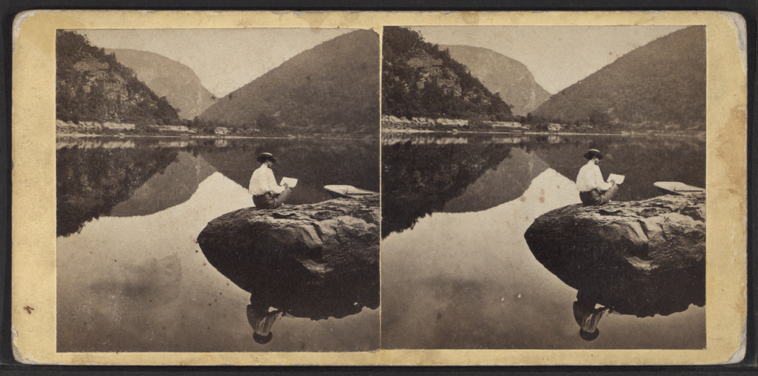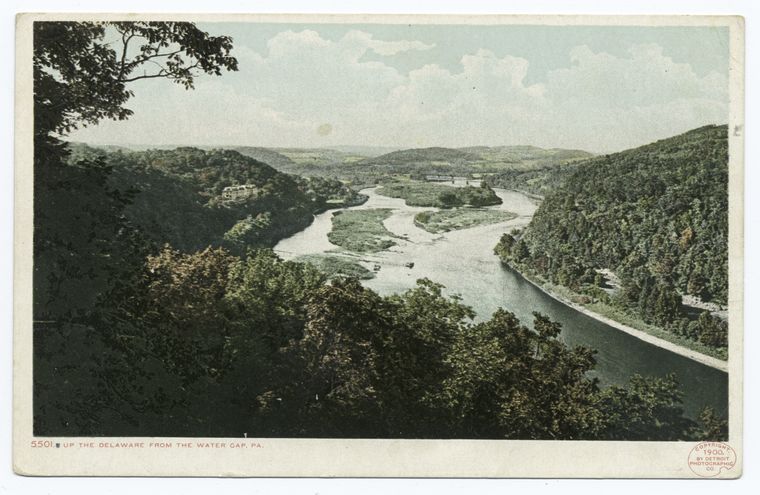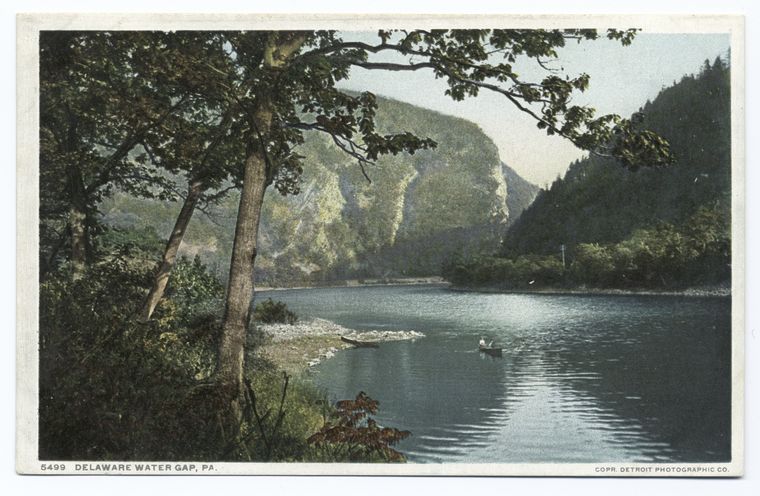A Fight on the River

Bluestone was the economic backbone of the Upper Delaware: Pennsylvania on one side, New York on the other and right down the middle is the Delaware River, a winding ribbon of water. In the 19th century hefty blue gray slabs mined from the mountains, were slowly hauled down the hillside by horse drawn wagons. The loaded wagons were brought to Lordville, Long Eddy and Callicoon and then hoisted onto big flat boats, stacked vertically and floated along the river to access points along the way, where the massive cleanly cut stone would then be transferred to trains that awaited them. The quarried stone was then transported to the city and turned into sidewalks, forming an integral part of the beauty of many of the neighborhoods throughout New York City. Many of the sidewalks I walk on everyday are paved in this magnificent stone.

Recently the area has come under strain of a heated and serious debate. The Upper Delaware Region sits atop a shale basin, called The Marcellus Shale region. It is speculated to have the most abundant source of natural gas locked in its rock, more than anywhere else in the United States. The Marcellus Shale region stretches across the states of Virginia, Ohio, Pennsylvania and New York, with the largest area concentrated in Pennsylvania. On one side of the debate you have energy companies slowly gobbling up the land, especially in Pennsylvania, enticing landowners with lease money to drill exploratory wells. The energy companies which are in sync with some of President Obama’s energy policies are trying to wean its customers from foreign oil. Drilling for natural gas would be an easy way to do this and the Marcellus Shale offers many years of drilling but the supply is finite and won’t even last a hundred years of drilling. Many landowners readily agree to sign multi-year leases, taking advantage of the money that is being offered. And why shouldn’t landowners profit? Initially landowners signed leases without a real understanding of the potential profits to be made from the precious natural gas under their land. They sold their land cheap compared to later lease signers who gambled and decided to wait to see where the prices of signing a lease would go. When it became certain of the abundance of natural gas below, frenzy ensued. Energy companies began offering more and more money per acre to buy the rights to drill for the invisible “gold” trapped in the ancient shale rock below. Shrewd landowners did well by the energy companies, others less savvy made deals ending in bitter feelings.

Our driver Jack graduated a couple years ago from Penn State and now works with his father running the family business of canoe rentals and a campground. With a single canoe strapped to the rack behind us, he drove the winding back roads where beautiful old farmhouses with fancy gingerbread dot the countryside. Here and there massive barns with a silver grey patina offer a glimpse of the livestock that live inside. The road leads to the Buckingham Access point on the Delaware River. This is only a 15 minute drive but it translates to 4 to 5 five hours of water travel on the river. I asked him about the drilling for gas issue and he was conflicted. As he drove along the road, he slowed up to point to a drilling site. I was shocked at the site’s proximity to the river and piqued by the juxtaposition of the beauty of landscape and the industrial set up of the well. Jack sees the rewards of signing a lease with the energy companies that brought in much needed cash to the family business so major capital improvements could be done. Jack has an engineering degree and understands the science of gas drilling. He notes that not all the energy companies are righteous but feels for the most part that the majority of the gas drilling companies have good intentions and are trying to do the right thing. He understands why there is a divide between residents who want to have drilling take place and those who do not. He notes that many of the residents who leased their land to the energy companies were barely scraping by as dairy farmers, land farmers and small business owners. He said that landowners like his father organized a consortium of other landowners to lease their land for the same price per acre, that way everyone benefits.
 Other landowners steadfastly refuse to sell the rights to drill on their land. Their fear stems from a technique used to extract the gas from the rock called “fracking.” Recent events have shown fracking to be unsafe and harmful to people, the land, their wells and potentially the vast Upper Delaware Watershed. “Fracking” frees up the natural gas from the rock it is in, thereby allowing drillers to extract the gas. A combination of chemicals (not readily revealed by the energy companies, but many that are known are carcinogenic and highly toxic) and water is forced into the rock under very high pressure. The rock is exploded and the natural gas is released, then tapped and brought to the surface. The “fracking” fluid, known as waste water is then pumped out of the well and stored in open lined pits, adjacent to the drill sites. There has been contamination of wells from below, as well as leakage and overflow of the waste water pits causing small but grave environmental damage. Recently New York voted to have a year long moratorium on natural gas drilling so further research can be conducted by the State to determine the actual safety of drilling for gas.
Other landowners steadfastly refuse to sell the rights to drill on their land. Their fear stems from a technique used to extract the gas from the rock called “fracking.” Recent events have shown fracking to be unsafe and harmful to people, the land, their wells and potentially the vast Upper Delaware Watershed. “Fracking” frees up the natural gas from the rock it is in, thereby allowing drillers to extract the gas. A combination of chemicals (not readily revealed by the energy companies, but many that are known are carcinogenic and highly toxic) and water is forced into the rock under very high pressure. The rock is exploded and the natural gas is released, then tapped and brought to the surface. The “fracking” fluid, known as waste water is then pumped out of the well and stored in open lined pits, adjacent to the drill sites. There has been contamination of wells from below, as well as leakage and overflow of the waste water pits causing small but grave environmental damage. Recently New York voted to have a year long moratorium on natural gas drilling so further research can be conducted by the State to determine the actual safety of drilling for gas.

Read E-Books with SimplyE
 With your library card, it's easier than ever to choose from more than 300,000 e-books on SimplyE, The New York Public Library's free e-reader app. Gain access to digital resources for all ages, including e-books, audiobooks, databases, and more.
With your library card, it's easier than ever to choose from more than 300,000 e-books on SimplyE, The New York Public Library's free e-reader app. Gain access to digital resources for all ages, including e-books, audiobooks, databases, and more.
If you don’t have an NYPL library card, New York State residents can apply for a digital card online or through SimplyE (available on the App Store or Google Play).
Need more help? Read our guide to using SimplyE.
Comments
Delaware River
Submitted by Cameron (not verified) on August 27, 2010 - 9:31am
I ran across this request on
Submitted by Ursula Murphy on November 5, 2010 - 10:37am
Thanks for the informative
Submitted by EVRU (not verified) on February 9, 2011 - 2:16pm